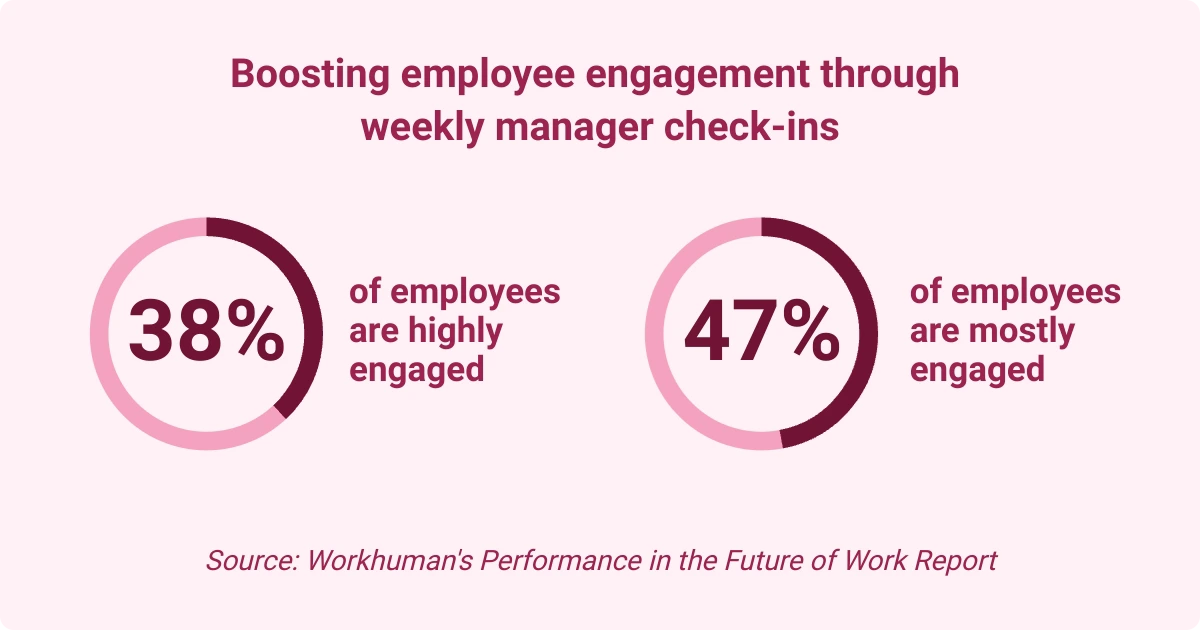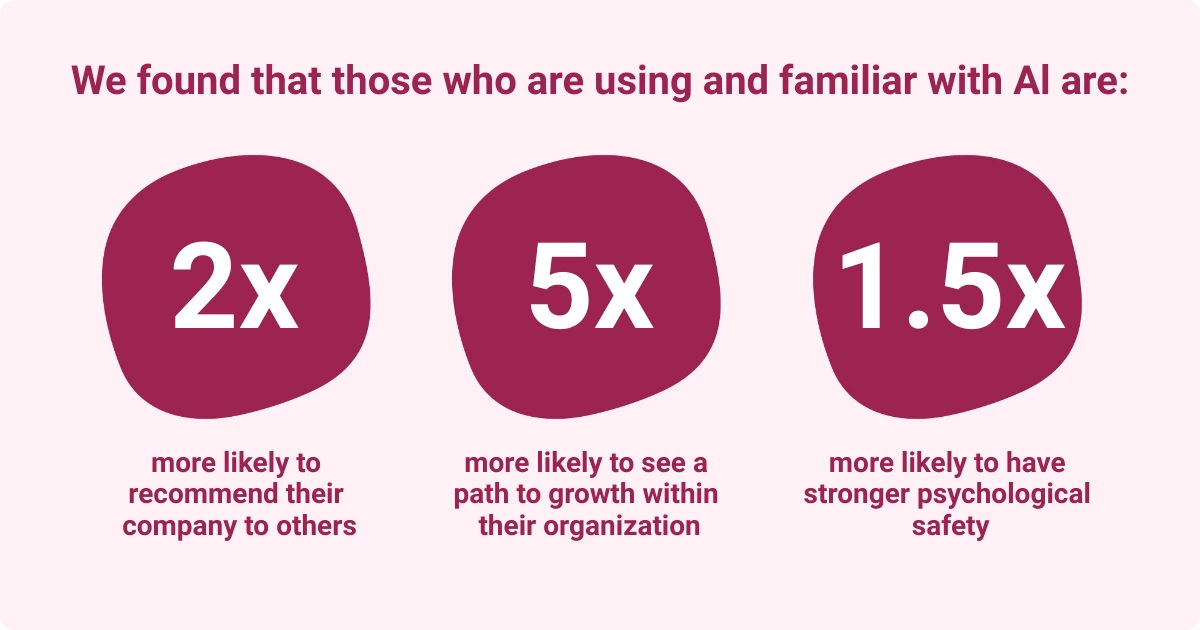HR Automation: Revolutionizing Human Resource Processes for Efficiency and Growth

Human resources (HR) professionals have a lot on their plates, to put it mildly. They juggle dozens of tasks, from interviewing job candidates to managing payroll to resolving disputes. Many companies use automation tools to help with routine tasks and lighten the load. According to the McKinsey Global InstituteOpens in a new tab, up to 30% of current work hours across industries could be automated by 2030.
HR automation may seem complicated, but you don’t need a background in computer science to get started. Many vendors (including Workhuman) have developed user-friendly software that makes it easy for anyone to automate HR processes.
What is HR automation?
Human resources automation uses self-operating digital tools to handle repetitive tasks that don’t need human input. For example, automation software can schedule interviews with job candidates and approve or deny leave requests.
Modern HR departments increasingly rely on automation software to reduce manual processes. This technology saves time by managing time-consuming HR tasks that don’t require human creativity or decision-making. This way, HR professionals can focus on more meaningful work — like mentoring employees and shaping company culture.
The latest HR automation software often uses artificial intelligence (AI) and machine learning. These technologies allow the software to make more complex decisions and learn from data over time.
According to a 2024 SHRM survey on HR Adopts AIOpens in a new tab of HR professionals, here are some of the most common applications of AI-powered automation tools:
- Generate job descriptions (65% of respondents)
- Provide actionable feedback for employees (57%)
- Personalize employee training (49%)
- Customize job postings (42%)
- Automate candidate searches (33%)
What are the benefits of HR automation systems?
Automating human resources processes may seem a little over the top, especially if your department is used to managing everything manually. You may wonder whether HR process automation is worth the hassle. While there is a slight learning curve, this technology offers many advantages for organizations of all sizes.
Streamlined workflows
Businesses can automate dozens of HR processes, including:
- Data entry
- Payroll processing
- Performance management
- Job applicant screening
Automating these workflows can significantly improve your HR team’s efficiency and productivity. For instance, your organization receives 350 applications for a software developer role. Traditionally, an HR professional would spend hours combing through resumes, picking top candidates, and scheduling interviews. By using AI in the recruitment process, teams can screen resumes and coordinate interviews in minutes.
Automation also helps prevent human error in critical HR tasks. Everyone occasionally clicks the wrong button or forgets about a task, but in HR, these mistakes can be costly. For example, if you mistype a bank account number, an employee won’t get paid. Automation reduces the risk of mistakes, increasing accuracy and saving time.
Streamlining workflows doesn’t just reduce your HR team’s workload. It also boosts overall organizational productivity. When HR operations work smoothly, everything else gets done faster.
Data-driven decision-making
HR automation software often comes with built-in data analytics tools. These features allow you to collect, analyze, and visualize HR data. Some platforms also use AI to predict future trends and recommend ways to improve performance.
These tools help HR teams make informed hiring, retention, and workforce planning decisions. Here’s a quick example: If turnover rates increase steadily, data analytics could reveal that most departures are newer staff hired within the last year. Based on this insight, you could improve your onboarding processes or create a mentorship program to offer extra support.
Improved employee experience
From payroll to training, every staff member relies on HR to help them do their job effectively. Automation can boost employee satisfaction by speeding up critical processes like onboarding and benefits enrollment. It also provides better access to self-service tools, empowering staff to handle tasks on their schedules.

Automation to create a better employee experience can significantly impact your business's bottom line. According to research by IBM and Workhuman, organizations in the top quartile for employee experience see three times the return on assets and double the return on sales as those in the bottom quartile.
Guaranteed compliance with industry regulations
Organizations must follow complex, frequently evolving labor laws and regulations. Even the most experienced HR specialists can struggle to stay up-to-date. HR automation can help your business stay compliant by automatically updating policies and keeping accurate records.
Challenges of HR automation
HR business process automation has many benefits, but it's not an instant solution. It's normal to face a few roadblocks along the way. In fact, the SHRM survey found that 70% of respondents encountered challenges when using AI and machine learning in HR. Here are a few potential obstacles and strategies to overcome them.
Maintaining a human touch
Automation can streamline many tasks, but you can't take the human element out of human resources. Certain processes will always require human judgment and empathy, which technology can't replicate.
Strike the right balance by using automation to improve — but not replace — meaningful human interactions. For example, software can generate performance feedback, but employees still need genuine conversations and personal guidance from a human mentor. Similarly, a computer will never resolve conflicts as effectively as an experienced HR specialist who understands their team's personalities and interpersonal dynamics.
Data security and privacy concerns
HR systems store sensitive employee data — such as bank account information and social security numbers — making them a prime target for cybercriminals. According to the Identity Theft Resource Center's Annual Data Breach ReportOpens in a new tab, the number of data compromises jumped by 78% between 2022 and 2023.
Safeguard your employees by following data security best practices when using automation software. Here are a few guidelines from the Federal Trade Commission:
- Inventory your data regularly
- Only give employees access to sensitive information on a need-to-know basis
- Use access controls like multi-factor authentication to prevent unauthorized data usage
- Dispose of data safely when you no longer need it
- Encrypt sensitive information
- Install firewalls and other cybersecurity protocols to block hackers
Your organization must also comply with all relevant data privacy regulations. For example, the General Data Protection Regulation (GDPR) requires companies to inform European residents about how their data is used and allow them to opt-out.
Change management and employee reskilling
You might assume employees will eagerly embrace HR automation, but that's not always true. The SHRM study reports that one in four HR professionals fear AI will displace their jobs. Others may resist automation because they're reluctant to adapt or change their roles.
While change can be scary, retraining and reskilling can smooth the transition. Offer workshops, training modules, and other resources to educate your HR team about new automated systems.
Integration with existing HR systems
Modern organizations typically have a complex web of digital infrastructure, from payroll software to time-tracking tools. If new automation tools don't mesh with your existing systems, they could seriously disrupt your workflows — or, even worse, cause your infrastructure to fail.
Save yourself the headache by choosing HR automation software that seamlessly integrates with your current technology. For instance, Workhuman integrates with Microsoft Outlook, Slack, Workday, and other popular platforms.
What HR processes can be automated?
Obviously, you can't automate every HR process — and for good reason. Some tasks will always require human discretion and tact, like firing employees and offering emotional support. However, you might be surprised by just how many processes you can safely automate. Here are some of the most common applications for this innovative technology.
Employee onboarding
Onboarding new employees is a necessary but time-consuming process. Effective onboarding processes can take up to one year and help newcomers transition into your company culture.
Improve the onboarding experience by using HR software to automate routine tasks, such as:
- Matching new hires with mentors
- Requesting equipment
- Scheduling orientation and training sessions
- Submitting hiring documents
- Gathering feedback about the onboarding process
These applications save time and let new hires focus on getting to know your company instead of filling out a mountain of paperwork.
Payroll and benefits administration
Employees expect to get paid accurately and on time, yet many organizations fail to meet this standard. EY's found that the average payroll accuracy rate is only 80%, with each error costing companies an average of $291 to correct. Inaccurate or late payments can also damage employee trust.
Avoid these common issues by automating payroll processing and benefits management. Let automation software handle routine tasks, such as:
- Calculating wages and overtime
- Compliance reporting
- Deducting taxes
- Updating benefits enrollment
Automating these workflows increases accuracy and allows you to consistently make timely payments. It can also boost employee retention by improving satisfaction and showing employees you value their time.
Performance management
Regular feedback is one of the most effective ways to keep employees engaged and motivated. According to Workhuman's Performance in the Future of Work report, 38% of workers who have weekly check-ins with their managers report that they are highly engaged, and 47% are mostly engaged. By contrast, employees who never check in are five times more likely to feel disengaged.

However, giving personalized feedback can be time-consuming, especially for managers overseeing large teams. That's where performance management tools come in. This technology can automatically:
- Analyze performance data
- Track goals
- Generate personalized performance reviews
- Schedule one-on-one meetings
Automating these processes means managers can spend more time building relationships with employees and delivering meaningful feedback.
Time and attendance tracking
Automated time and attendance systems make it easy to track your employee hours. Staff can clock in and out with facial recognition, a QR code, a mobile app, and other options. The software records this information in real-time, enabling accurate payroll processing.
These systems typically include self-service portals where employees can manage their attendance. For example, workers could log on to see how many sick days they have left or request a week off. These convenient services give staff more control over their schedules while reducing the HR team's administrative workload.
Recruiting and hiring processes
Every second counts when hiring new employees. Vacant positions can decrease team productivity or cause burnout if current employees must pick up the slack. However, the recruitment process can be lengthy. According to the Employ Recruiter Nation ReportOpens in a new tab, filling an open role takes an average of 47.5 days.
Speed up recruiting and hiring processes with automation tools. While humans should still make the final hiring decision, this technology can handle many tedious tasks, such as:
- Tailoring job descriptions
- Screening resumes
- Scheduling interviews
- Sending reminder and follow-up emails
Automation software can also promote fair and equitable hiring practices. For example, you can use these tools to add inclusive language to your job postings, increasing the likelihood of attracting diverse talent. Additionally, automatically screening resumes can help prevent unconscious biases, such as favoring candidates based on their college or gender.
Best practices for implementing HR automation
Automating HR processes may seem intimidating, but you don't need to be a tech whiz to get started. The key is carefully planning your implementation and gradually rolling out the new system. That way, you won't cause a mass panic in the office by changing everything all at once.
Set yourself up for success by following these strategies:
1. Identify and prioritize processes to automate
Resist the urge to automate all your processes immediately. Too many changes will overwhelm all but the most adaptable employees, leading to frustration and confusion. It can also make it difficult to spot any issues quickly.
Instead, consider which HR processes will benefit most from automation. Focus on high-impact tasks that will save the most time, such as payroll processing and recruiting. This approach lets you see clear results and gain employee buy-in before expanding to other areas.
2. Choose the right HR automation tools
Spend a few minutes researching HR automation tools, and you'll discover dozens of platforms. As you explore your options, consider these key factors:
- Ability to integrate with your existing systems
- Customer support
- Data security features
- Pricing
- Scalability
- User-friendliness
Make sure the software you choose supports your business goals. For instance, look for tools that automate recognition and performance feedback to improve employee satisfaction.
Well-known providers of HR automation software
Many top providers have developed human resources automation tools, including:
- Workhuman is a leading recognition platform that automatically rewards employees for hard work, boosting satisfaction and retention. It also includes AI-powered analytics tools that collect and analyze employee data, generating valuable insights to help solve HR challenges.
- BambooHR automates payroll processing, benefits administration, hiring and onboarding, and other essential HR workflows. It improves efficiency and prevents data silos by centralizing everything into a single platform.
- Workday combines HR and finance workflows for smoother operations. This AI-powered solution automates workforce analytics and reporting, talent management, and payroll processing.
- TriNet Zenefits is a payroll processing and compliance solution. Businesses use this platform to automate onboarding, tax deductions, and other demanding administrative tasks.
3. Implement gradually with a pilot program
Developing a pilot program is the best way to automate HR processes. Start small by automating one or two tasks within your department. For example, you might begin with attendance tracking or performance management for a few employees.
This approach allows your team to gain confidence and learn new skills in a low-stakes environment. Once the pilot program runs smoothly, you can do a company-wide rollout.
4. Provide comprehensive training and change management
Many automation tools are user-friendly, but HR staff and employees still need to learn how to use the new system. Look for a vendor that offers hands-on workshops or online tutorials. These resources will help your team get up to speed quickly and prevent errors.
Highlight the positive impact of these tools on your staff's daily routines and performance. This method can help overcome resistance and get employees excited about the change.

The future of HR automation
Artificial intelligence, machine learning, and other technologies drive innovation in hr. Here are a few emerging trends shaping automation in this field.
The role of AI automation in HR
AI-powered software can handle more complex tasks than traditional automation tools. For example, businesses can use AI algorithms to analyze historical data and predict hiring and employee engagement trends. These advanced capabilities allow HR professionals to make real-time decisions and adjust their strategies quickly.
Personalization in HR automation
Your employees are individuals, and they deserve personalized support that recognizes their unique needs. Future automation tools will make offering custom onboarding, training, and career development programs easier. This hyper-personalization will help employees achieve their professional goals and strengthen their connection to the company.
Enhancing the employee experience through automation
As an HR professional, you're always searching for new ways to improve the employee experience. Emerging automation technology in human resource management will support this goal by offering self-service tools and seamless workflows. This software empowers employees to manage tasks independently instead of relying on the HR team.
Ethical AI and data privacy in HR automation
While HR automation offers many benefits, it raises troubling ethical concerns about data privacy. A 2024 PrivacyHawk surveyOpens in a new tab found that 80% of Americans are worried about their data being used to train AI models, and 51% don't trust companies to protect their information.
Businesses can address these concerns by practicing accountability and transparency. Explain how your automation software collects, stores, and uses employee data. Allow workers to opt out of data collection whenever possible. These steps will help build trust and give employees more control over their information.
Selecting tools that safeguard employee data will also help ease privacy concerns. Look for software with strong cybersecurity protocols, such as access controls and multi-factor authentication, to keep out unauthorized users.
Conclusion
Automation software has become a must-have tool for companies of all sizes. By taking over repetitive tasks, this technology can significantly improve efficiency and lighten your HR staff's to-do lists. It also helps tackle common HR management issues, such as payroll errors and slow onboarding.
Automating HR processes takes time and planning but can lead to big rewards. With a little effort, your team's productivity and satisfaction will skyrocket as they regain control of their workflows.